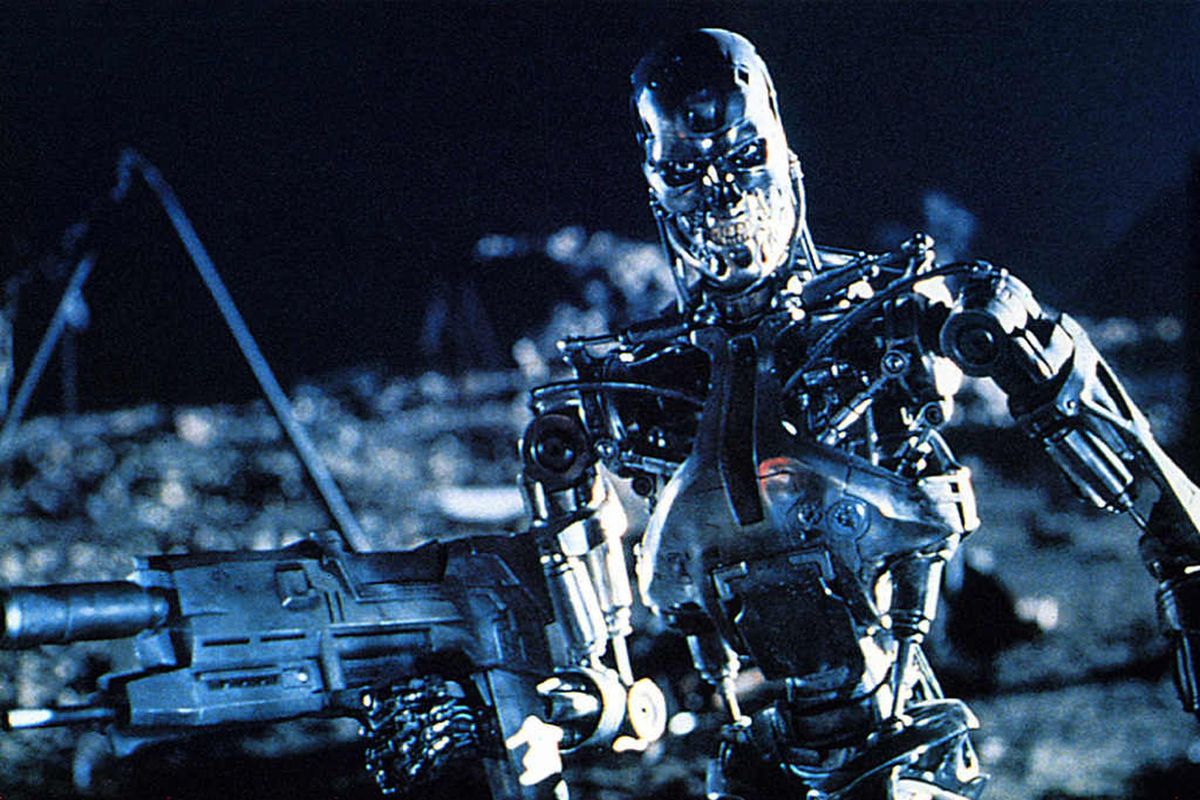With the upcoming Terminator: Dark Fate set to ignore everything but the first two films, it’s time to stand up for Terminator 3.
That’s right. Rise of the Machines. The one that killed off Sarah Connor off-screen and has Arnold Schwarzenegger saying “Talk to da hand!” Most people give it some credit for a shock ending, but generally oppose its grimness. To be fair, it isn’t as much of an all-time classic as the two James Cameron films. Nobody is likely to argue that. However, it is the last Terminator sequel that was actually about real-world fears, and it stands alongside the first two as a reflection of the way each subsequent decade dealt with existential dread. Salvation and Genisys are forgettable because they’re mostly “wouldn’t it be cool if…” high concepts. Terminators 1-3 are, at their very core, about our actual fear of nuclear destruction.

The first Terminator came out in 1984, at the height of revived Cold War tensions, and a year after The Day After had traumatized TV viewers with a realistic depiction of global nuclear war. Both the Terminator itself and the imminent future war are presented as relentlessly marching closer and closer. The cyborg as metaphor could be defeated, but the movie ends with gathering storm clouds and the war still to come. This reflected a common view that at some point, another destructive World War was probably inevitable. It wouldn’t be until a year later that Mikhail Gorbachev came to power in the then-Soviet Union, striking up a constructive relationship with U.S. president Ronald Reagan that looked like it would bring the world back from the brink.
RELATED: Arnold Schwarzenegger Talks About Shooting Terminator: Dark Fate
Terminator 2 came out in 1991. The Berlin Wall had fallen, and the Cold War was officially over, prompting some last minute changes to James Cameron’s script. (John Connor’s line “Why attack the Russians? Aren’t they our friends now?” is the most noticeable.) The world could finally believe that what it had taken to be a status quo of permanent high-alert status need not remain so. Sarah and John Connor don’t just look to survive the evil cyborg this time. They changed the timeline to prevent the nuclear war from ever happening. Now, in doing so they should arguably prevent John and the Terminators from ever being born, but we didn’t know about Avengers: Endgame rules back then. Cannily, Cameron cut a utopian future happy ending at the last minute. It keeps the future still in motion, and pointedly allows for more sequels.

In 2003, when Terminator 3 came out, the world had changed again, and not for the better. The terrorist attacks of 9/11, followed immediately by mass anthrax mailings, reminded us that the world was not safe, if it ever had been. The new fear wasn’t a global nuclear exchange, but the notion that a suicide bomber could secure a weapon of mass destruction and set it off in a populated area. In some ways, this was scarier. War between the U.S. and the U.S.S.R. was theoretically deterred by the fact that both sides knew it would be an unwinnable suicide pact. But apocalyptic terrorists willing to blow themselves up are clearly beyond any possible threats of retaliation.
RELATED: Linda Hamilton Slams the Previous Terminator Films
So Terminator 3 reset the doomsday clock. It promptly let John Connor know that even though he thought he had prevented the apocalypse, some future events are inevitable. Humanity will always go back to being destructive. Of course, the evil Skynet was now an online virus carried over phone lines. Just as the hate groups who perpetrate terrorism link up over the Internet. While the movie teases a possible victory for John, he soon finds that it was a trick just to keep him safe. Which is the best he can hope for in this timeline. In the real world, the Global War on Terror was making people feel the same.

As a trilogy, the original Terminator films reflect the evolution of world crises and their perception across three decades. Nothing in the franchise since then has really tried. There have been any number of cool action sequences. Let’s not forget, the truck chase in T3 is a doozy that deserves more respect than it gets. But the best subtext Terminator: Salvation gave us was a tedious Tin Man metaphor. And Genisys spent so much time building towards sequels that would have brought in a multiverse that it forgot to be relevant now.
RELATED: Go Behind the Scenes With This Terminator: Dark Fate Featurette
Rise of the Machines, on the other hand, was a real kick in the pants when it came out. It was meant to hurt, and it did. Even now, it’s tough to tell how much of the backlash is from people who didn’t like what it did well, or just didn’t think it actually did a good job. Yes, it sorely misses Linda Hamilton. But the action, from the truck chase to the bathroom fight, and the final helicopter chase, is kick-ass and to the point. And the new Terminator offers some tantalizing tidbits suggesting an even richer story. He kills John Connor in the future, then gets reprogrammed to protect him in the past? What?
It’s hard to know what sort of global metaphor a new sequel should explore. Maybe one of the political parties in the U.S. is in league with Terminators who want to make us destroy ourselves from within. With T3 no longer canon, the Skynet virus can’t still be around, though that doesn’t preempt a new version of that idea (Twitternator?). Maybe Terminators can form their own rogue state, and the President gets compliments for making friends with them. Who can say? But if the filmmakers want Dark Fate to be valued part of canon, it can’t just have great action. It has to hold a mirror up to our fears, and offer a way through.









